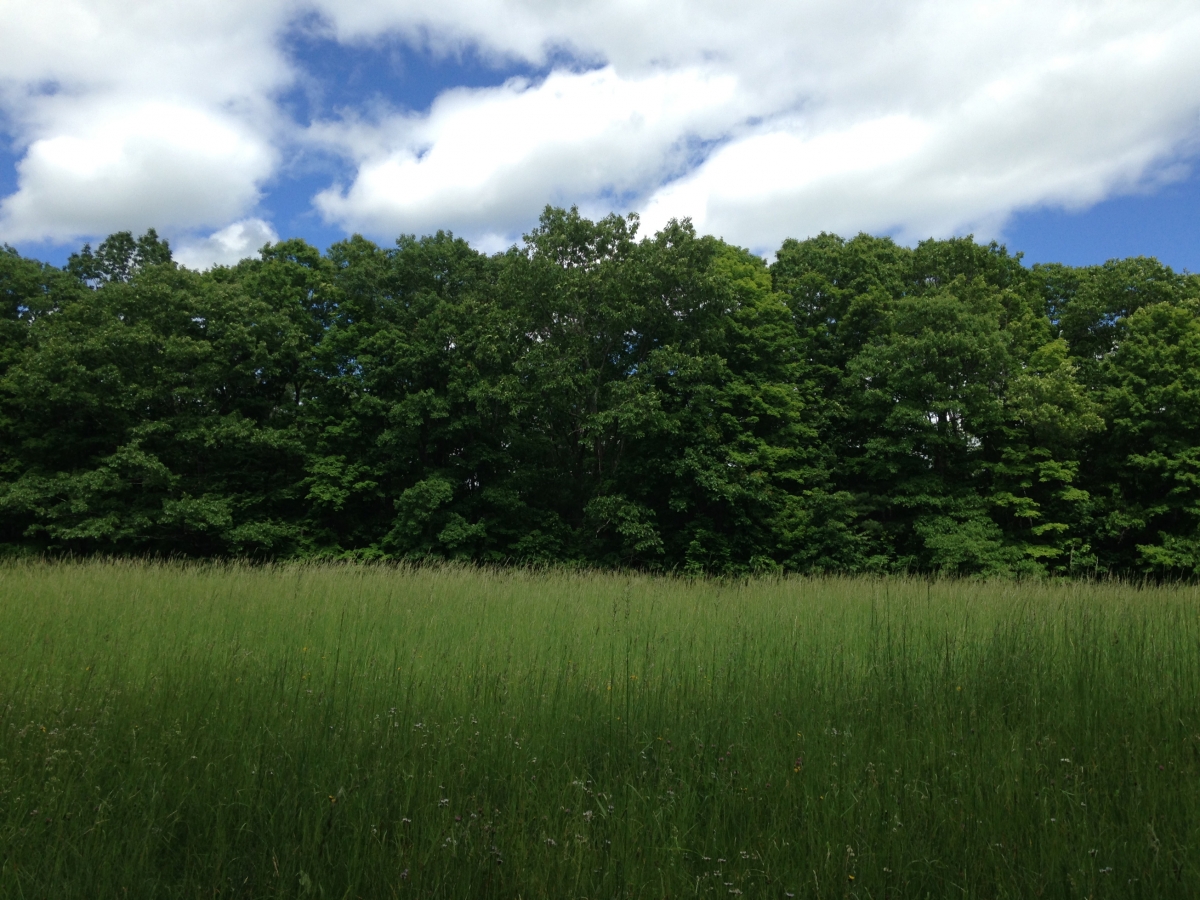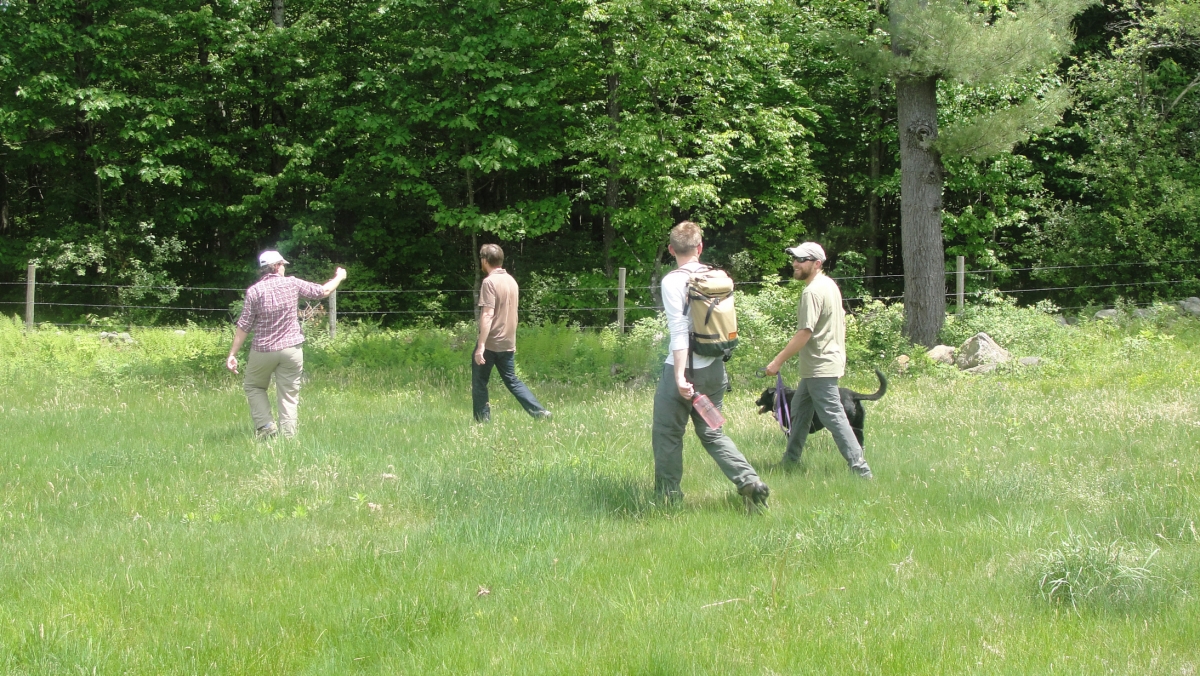You are here
Life on the Edge
Despite being conducted in rural Petersham, Massachusetts, the inspiration for my summer research project comes from patterns observed in urban environments. We live in a growing world in which cities are expanding, both in terms of population and geography. As cities sprawl outwards, forested regions, such as New England, are converted into fragmented landscapes where the forest is interrupted by human land use. Replacing forests with something else can have significant impacts on the carbon cycle as forests play a key role in removing and storing atmospheric carbon. However, the data that I have collected this summer suggests that forests have the ability to mitigate some of the carbon storage loss associated with forest fragmentation.
When forests are fragmented, forest edges are created. Forest edges then experience different climatic conditions than the interior of the forest does, which results in an increase in tree growth at the forest edge relative to the interior. This faster growth means that trees along the edge are removing and storing more atmospheric carbon than trees on the interior.
In order to explore this phenomenon, the first thing that my mentors and I had to do was find forest edges, which is easier said than done in such a rural environment. Even after finding good forest edges, the nature of the forest edge makes it a great property boundary. So while the forest itself may belong to Harvard Forest, the trees on the edge may be on private property, meaning that we would need permission from the landowners to collect data from their trees. Luckily, we found some generous local landowners who allowed us to use their land for scientific purposes. The bright side of the difficulties in finding forest edges to use is that I ended up traveling to and setting up research plots in all Harvard Forest tracts, in addition to many of the other beautiful open spaces that Central Massachusetts has to offer, allowing me to work in and see different places every day.
One of the objectives of this project is to determine how conditions at the edge of the forest differ from conditions in the interior, which will give us insight into why we observe more growth in edge trees. This involved setting up sensors measuring variables such as light, temperature, and soil moisture at various distances from the edge. Furthermore, in order to show that the trees at the edge were growing faster than trees on the interior, I have spent many hours this summer measuring the diameter of trees and taking tree cores. Tree diameters reflect how much carbon is currently stored in the forest, and tree cores can help determine how much carbon is being stored each individual year, indicated by the tree’s annual rings. Finally, in order to determine net carbon exchange along the edge, I also measured soil respiration, which is a measure of carbon leaving the forest. This way I could determine whether forest edges also released more carbon dioxide, which might cancel out the effect of increased growth.
All of these measurements involve long days in the field, which has definitely been my favorite part of my experience this summer. I typically spend 4 out of the 5 weekly work days out in the field, driving and hiking to various scenic research sites to identify, measure, and learn about trees. At lunchtime, you can probably find me propped up against a tree with a sandwich and no phone service, which is a nice change of pace after living in densely populated cities for the past 21 years. It’s very easy to forget the fact that you’re at work on days like that.
That's an important point that I would like to make about this summer. Very few times did I feel like I was working a job. Living with a group of nice, smart, enthusiastic students who all love to learn about the natural world is easy. Being able to sit down and talk to professional ecologists from a wide array of backgrounds and interests is endlessly beneficial to an undergraduate. And studying something that I find valuable, in the exchanges between the human and natural world, makes all of the stresses associated with being a first time researcher well worth it. Harvard Forest is a truly rewarding place and will be the source of many daydreams when I retreat back to the concrete jungle of Boston in two weeks.




